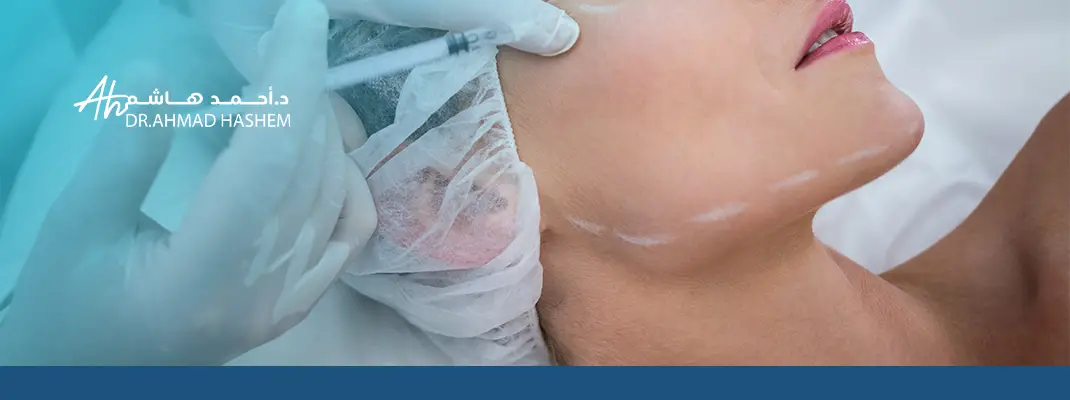In recent years, non-invasive treatments for skin tightening and lifting have gained immense popularity. Among the most sought-after procedures are Ultherapy and Ultraformer HIFU (High-Intensity Focused Ultrasound), both of which promise to rejuvenate the skin and restore a youthful appearance. But how do these treatments compare? Which one is better for your specific needs?
In this article, we’ll delve into Ultherapy vs. Ultraformer HIFU, exploring their benefits, effectiveness, cost and who is best suited for each…
Table of Contents
What is Ultherapy?
Ultherapy, also known as Ulthera, is a non-surgical cosmetic treatment designed to tighten and lift the skin of the face, neck, and chin. This FDA-approved ultrasound therapy works by gradually lifting the skin, helping to reduce fine lines and wrinkles>
uses micro-focused ultrasound technology to target the superficial layers of the skin. This technique delivers a much lower level of ultrasound energy compared to the high-energy ultrasound typically used in medical procedures like tumor removal. The ultrasound waves used in Ultherapy are designed to stimulate collagen production deep within the skin, promoting a more youthful and firm appearance.
While similar to the ultrasound used in pregnancy imaging or other medical diagnostics, the key difference is that Ultherapy emits different frequencies of ultrasound energy to penetrate the skin and lift it. This unique approach has made Ultherapy the only non-invasive treatment of its kind.
Studies have shown that Ultherapy is safe and effective, making it a trusted option for individuals seeking non-invasive skin tightening without the need for surgery.

What is Ultraformer HIFU?
Ultraformer HIFU is a cutting-edge non-surgical skin rejuvenation treatment available at Dermasurge Clinic. It uses High-Intensity Focused Ultrasound (HIFU) technology to lift, tighten, and contour the skin, offering results comparable to cosmetic surgery but without the need for incisions or extended downtime.
This innovative procedure begins with a personalized consultation with a qualified Ultraformer III practitioner, where the treatment is tailored to meet the individual’s specific aesthetic goals. Unlike many other procedures, Ultraformer HIFU requires no pre-treatment preparation, making it a convenient option for individuals looking to enhance their skin without a lengthy preparation process.
Treatment sessions generally last between 30 to 45 minutes, depending on the areas being treated. One of the biggest advantages of Ultraformer HIFU is that there is no recovery time required. Patients can return to their daily routines immediately after the procedure, making it perfect for those with busy schedules.
While the results are noticeable immediately, they continue to improve over the next 4 to 12 weeks as the treatment stimulates collagen production, providing gradual skin rejuvenation. This process offers a more youthful, lifted appearance over time, giving clients the confidence of natural-looking results.
Read More: Chin Filler Treatment for a Defined Jawline
Ultherapy vs. Ultraformer HIFU: Which is Better?
both treatments offer non-invasive skin tightening and lifting benefits. However, there are key differences:
- Ultherapy is known for its FDA-approved ultrasound technology, while Ultraformer HIFU uses a more versatile approach with different depth levels, offering more customization.
- Ultraformer HIFU treatments tend to be faster than Ultherapy, making it a popular choice for those with limited time.
- Both treatments provide noticeable results, but Ultraformer HIFU can offer a more dramatic outcome due to its ability to target multiple layers of skin with precision.
- Ultherapy may cause more discomfort for some individuals due to its deeper penetration, while Ultraformer HIFU is often regarded as less painful due to its adjustable settings.
Who Should Avoid Ultherapy?
- Pregnant or breastfeeding women.
- Those with active skin infections or open wounds.
- People with severe skin conditions like eczema or psoriasis.
- Patients with certain medical conditions such as nerve or muscle diseases may be advised to avoid the procedure.
What is the Best Age to Get Ultherapy?
Ultherapy is suitable for individuals starting in their late 30s to early 40s, especially those noticing early signs of skin laxity or sagging.
Ultherapy vs. HIFU Cost: What Are the Differences?
- Ultherapy cost typically ranges between $1,000 to $4,000 per session depending on the treatment area and location.
- Ultraformer HIFU cost can range from $300 to $2,000 per session, depending on the area being treated and the number of units required.
FAQ
Which is better, HIFU or Ultherapy?
It depends on your needs. HIFU offers a more versatile treatment with multiple depths, while Ultherapy is FDA-approved and specializes in collagen stimulation for skin tightening.
What is more effective than HIFU?
Thermage and RF Microneedling are alternative treatments, but HIFU remains a popular choice for skin lifting and tightening.
What is the best age to get Ultherapy?
A: Ultherapy is ideal for individuals in their late 30s to early 40s, though it can be beneficial for older individuals showing signs of skin sagging.
Don’t miss out on the opportunity to transform your appearance with the latest in non-surgical treatments. Book your consultation at Dr. Ahmad Hashem’s Clinic today and experience the benefits of Ultherapy or Ultraformer HIFU.secure your appointment now and take the first step toward a youthful look.
د.أحمد هاشم
استشاري جلدية وتجميل وليزر وزراعة الشعر وطب ضد الشيخوخة، ومدرب للأطباء على البوتوكس والفيلر والشد بالخيوط








